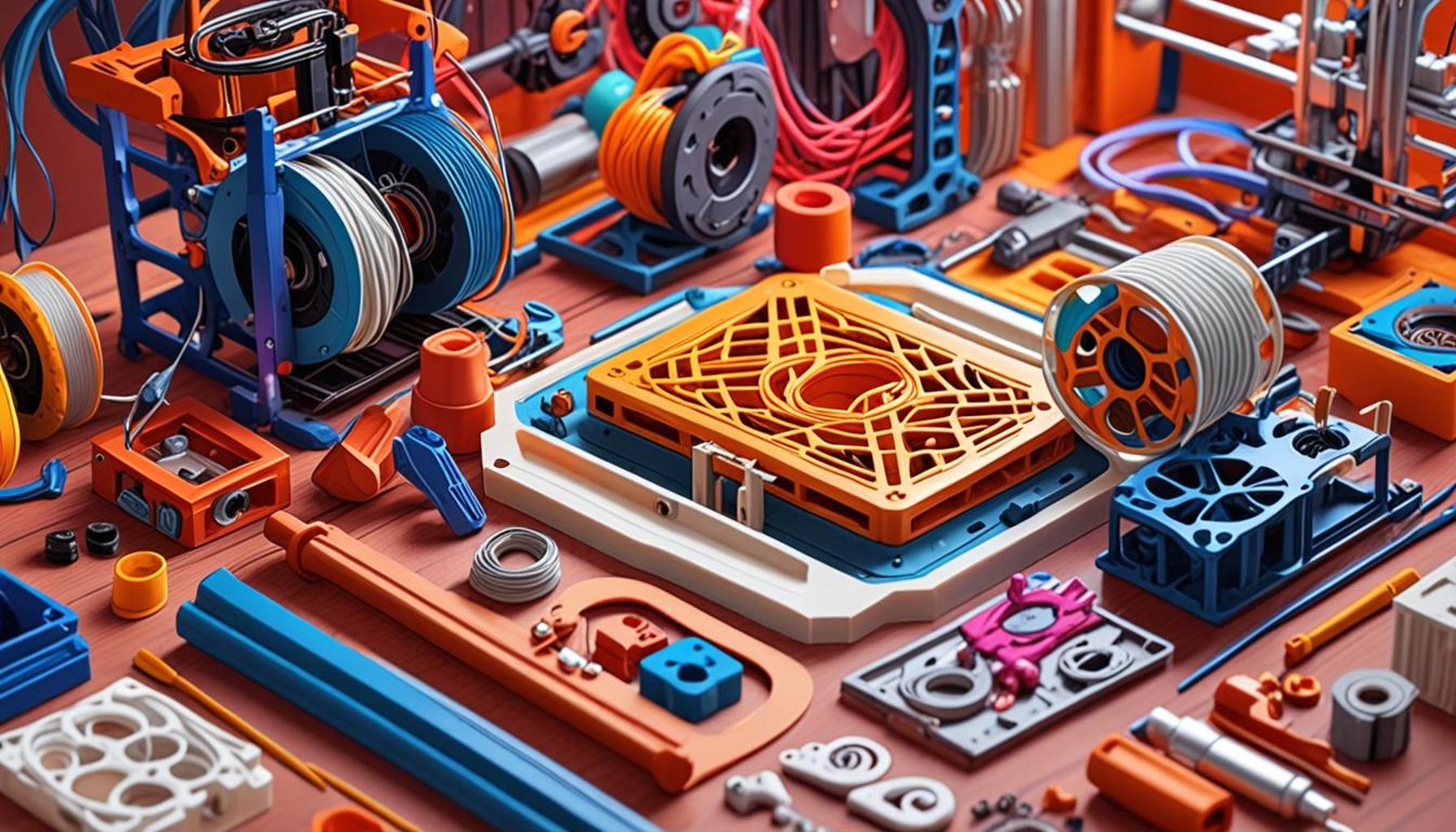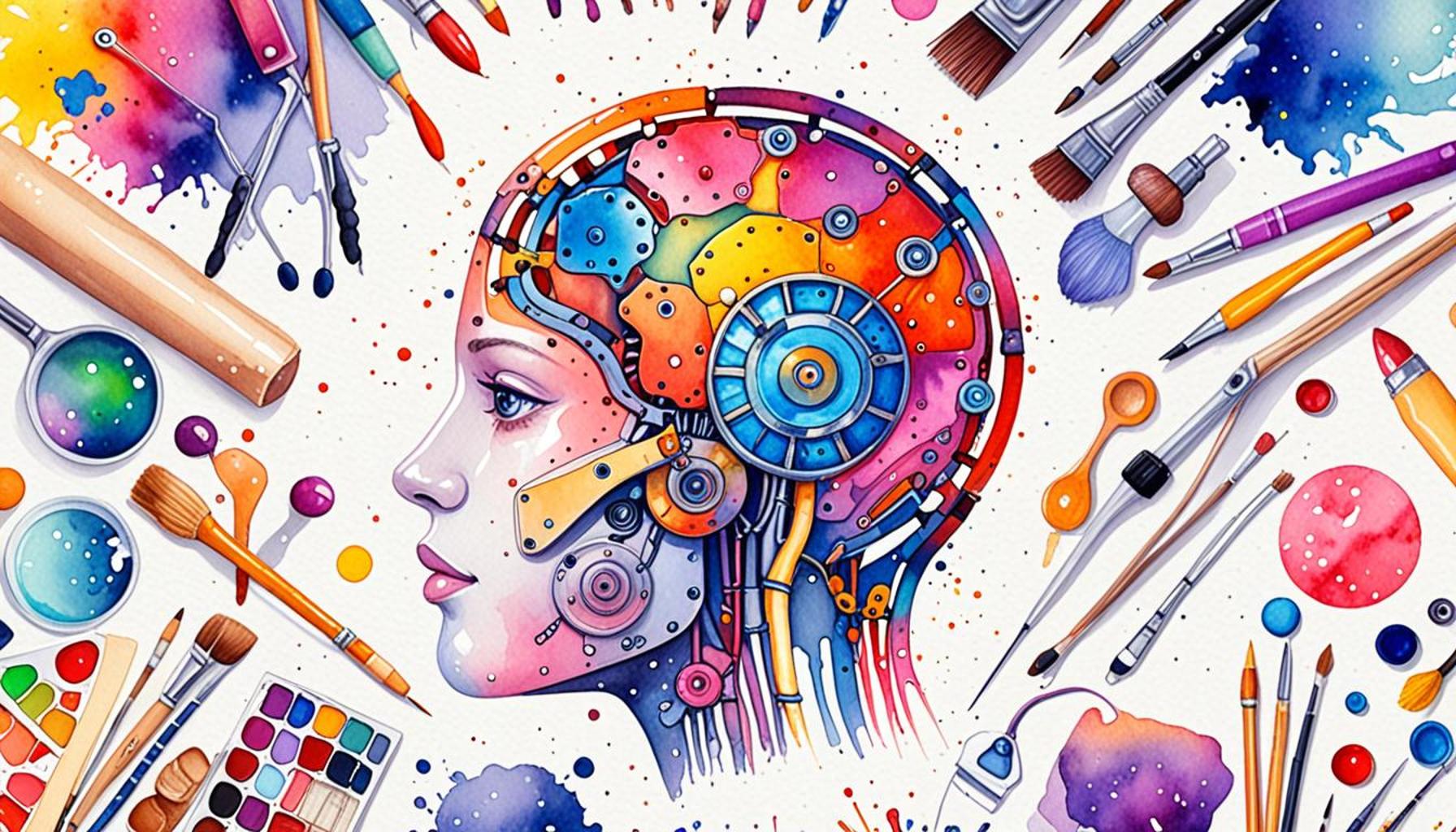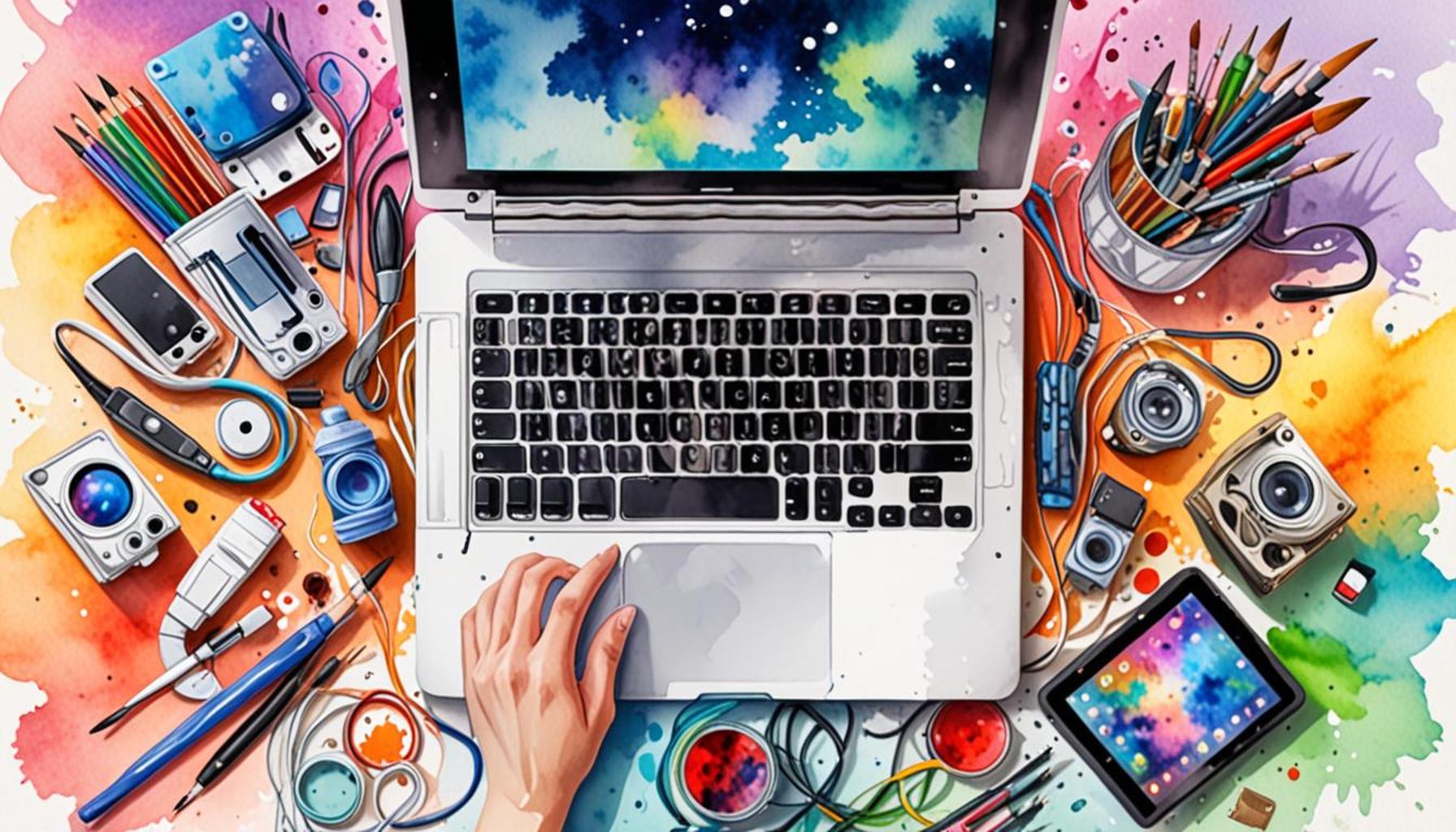Exploring the Intersection of 3D Printing and Crafting: How Technology is Transforming Creative Hobbies

Revolutionizing Creativity
In today’s fast-paced world, the fusion of technology and traditional hobbies is creating a dynamic shift in the way we think about crafting. No longer limited to just paintbrushes and scissors, crafting enthusiasts are embracing 3D printing as a powerful tool. This innovation is redefining personal creativity and enabling crafters to push the boundaries of their imagination in unprecedented ways.
The Rise of 3D Printing in Crafting
3D printing offers unparalleled opportunities for hobbyists seeking to explore new frontiers in creativity. This technology allows for the production of intricate designs and custom pieces, transforming the crafting experience significantly:
- Customization: Crafters can design unique items tailored to personal preferences. For example, a jewelry maker can create a one-of-a-kind pendant shaped like their favorite animal, something that would be nearly impossible to achieve using traditional methods.
- Accessibility: Affordable 3D printers are becoming increasingly common, making this amazing technology available to more people. Brands like Creality and Anycubic now offer printers at prices accessible to casual crafters, allowing for widespread use in homes and small businesses alike.
- Innovation: New materials and methods are continuously being introduced, fostering creativity. Crafters can now use biodegradable plastics or flexible filaments, marrying eco-conscious practices with modern technology.
The possibilities are virtually endless; from creating custom molds for baking to producing tailored home decor items, 3D printing is empowering hobbyists to manifest their wildest ideas. Workshops and online tutorials abound, helping novices dive into these creative adventures.
Bridging Art and Science
As more crafters adopt these advanced techniques, the intersection of art and technology becomes more pronounced. Traditional artisans are increasingly melding their creative skills with technological expertise. This marriage of disciplines has sparked a vibrant community of innovators who are continually pushing the envelope. Consider a woodworker who now uses 3D modeling software to plan out intricate patterns before cutting, leading to a seamless blend of craftsmanship and modern design principles.
This evolution is not just a trend; it’s a revolution in the crafting landscape. Individuals are exploring the unlimited potential that 3D printing brings, creating everything from functional gadgets to whimsical art pieces. Craft fairs are beginning to highlight 3D printed designs prominently, showcasing how these tools can enhance creativity rather than overshadow traditional methods.
As this movement gains momentum, it can be anticipated that crafting communities will only grow, fostering collaborations that bridge generational gaps and welcome beginners with open arms. This is an exciting time for crafters, artists, and innovators alike, as they harness technology to enhance and elevate the very essence of creativity.
DISCOVER MORE: Click here to dive deeper
Empowering DIY Culture
The integration of 3D printing into the crafting world is not merely a technological advancement; it’s a powerful enabler of the DIY culture that has flourished across the United States. As hobbyists embrace this modern tool, they find themselves empowered to create bespoke items that were previously limited to professional artisans or specialized manufacturers. This shift is resulting in a democratization of creativity, where anyone with a computer and a 3D printer can bring their unique ideas to life.
Enhancing Traditional Crafts
For many artisans, the use of 3D printing complements rather than replaces their traditional crafting methods. Crafting techniques such as woodworking, sewing, or pottery are beginning to seamlessly incorporate 3D printed elements. For example, a ceramics artist might use 3D printed molds to create intricate shapes that would be painstakingly difficult to form by hand. Similarly, textile artists are experimenting with 3D printed accessories that can be integrated into fabric, creating an unparalleled fusion of form and function.
This innovative approach is proving especially valuable in customizations. Crafters can now design personalized tools and gadgets that fit their specific needs, significantly enhancing their crafting experience. Seamstresses can print custom zippers or buttons, while painters may opt for unique stencils tailored for their artworks. The ability to modify traditional items increases both efficiency and creativity, allowing for an exploration of new techniques.
Facilitating Collaborative Projects
Moreover, the accessibility of 3D printing technology has encouraged a wave of collaboration among crafters. Makerspaces and community workshops are sprouting up throughout urban and suburban areas, serving as hubs where individuals can utilize shared resources, including advanced 3D printers. These spaces foster a sense of community by enabling both seasoned crafters and newcomers to learn from one another. Attendees often reach across crafting disciplines, collaborating on projects that require a combination of skills from different artisans, resulting in innovative art pieces and functional designs that represent a blend of creative backgrounds.
The impact of technology on creative hobbies also resonates in online platforms. Websites like Thingiverse and MyMiniFactory allow crafters to share digital designs with a global audience, effectively removing barriers to entry for budding creators. Individuals can download free or paid 3D print files, offering an easily accessible way to jumpstart their own projects. The act of sharing designs cultivates a culture of inspiration, where crafters can learn from each other while simultaneously discovering new techniques and materials.
In summary, as 3D printing becomes a staple in crafting, it is reshaping the landscape of creative hobbies. By enhancing traditional practices, fostering collaborations, and facilitating the sharing of ideas, this technology is empowering a generation of crafters to realize their boldest artistic aspirations. The movement is far from static, and as it grows, so too does the potential for imaginative outcomes and community engagement in the crafting sphere.
| Advantages of 3D Printing in Crafting | Impact on Creative Hobbies |
|---|---|
| Customization | 3D printing allows hobbyists to create unique, tailor-made designs that reflect their personal style. |
| Accessibility | With user-friendly software and accessible printers, anyone can start crafting with 3D technology, lowering barriers to entry. |
| Rapid Prototyping | Hobbyists can quickly iterate designs and experiment with new ideas, fostering innovation. |
| Cost Efficiency | 3D printing often reduces costs associated with materials and tools compared to traditional crafting methods. |
As we delve deeper into the realm of 3D printing technology, we find it is revolutionizing the way crafting is perceived, making it more interactive and dynamic than ever before. Traditional crafting methods often involve tedious processes and limitations in replicating complex designs. However, with 3D printing, creators can explore intricate shapes and structures that were once deemed impossible. Each spooled filament opens up a world of possibilities, from creating elaborate architectural models to cute, personalized trinkets.Moreover, collaborative platforms are emerging, where crafters can share their 3D designs, learn from each other, and even sell their creations globally. Platforms that facilitate open-source design sharing not only build community but also enhance the skills of individuals eager to master the fusion of technology and creativity. This kind of interaction breathes life into the make-and-share culture, igniting a passion for innovative hobbies while developing a competitive marketplace. As the lines between technology and craft continue to blur, enthusiasts of all ages are encouraged to participate, contributing to an ever-expanding universe of creativity. This wave of advancement is just beginning to reshape how we approach our hobbies—encouraging exploration, experimentation, and, ultimately, a revolution in personal expression through 3D printing.
DISCOVER MORE: Click here to dive deeper
Reviving Lost Art Forms
As we delve deeper into the realm of 3D printing and crafting, we encounter an unexpected synergy: the revival of lost arts and crafts that might have been relegated to history. Traditional crafting practices often fall by the wayside due to the labor-intensive nature of their techniques. However, the introduction of 3D printing technology is providing artisans the tools needed to breathe new life into these techniques.
For instance, ancient pottery techniques that once seemed daunting can now be reimagined with precision 3D printed molds, allowing artists to replicate traditional designs with newfound efficiency. This not only preserves cultural heritage but encourages contemporary artists to interpret and infuse modern aesthetics into age-old practices. Blacksmithing, often viewed as an intimidating craft, can benefit from 3D printed tools and templates that enable artisans to experiment with shapes and designs that were previously too complex to create by hand.
Environmental Considerations
Moreover, the intersection of 3D printing and crafting is generating conversations around sustainability and environmental responsibility. Traditional crafting methods often rely on materials that can be resource-intensive or harmful to the environment. However, advancements in 3D printing have led to the development of biodegradable and recyclable materials that cater to eco-conscious artisans. Filaments made from recycled plastics or natural substances like cornstarch are becoming more accessible, signifying a shift towards sustainable crafting practices.
As a result, crafters are finding innovative ways to minimize waste. For example, designers can create objects that optimize material usage, transforming scrap materials into new creations or tools. The ability to model and print from digital files reduces excess production and encourages a mindful crafting approach centered around individual needs instead of mass consumption.
Personalizing the Experience
One of the most significant aspects of this technological evolution is the level of personalization it introduces to the crafting experience. Crafters no longer face the limitations of pre-manufactured components that may not align with their vision. Instead, they can tailor every aspect of their projects, from dimensions to textures, using CAD software that democratizes design knowledge. These user-friendly design platforms allow even beginners to create intricate models that they can bring to life on their printers.
With the ability to customize every detail, there is virtually no limit to what can be produced. Items ranging from personalized jewelry to customized home decor are now common sights in local and online marketplaces. This has spurred a rise in small businesses and cottage industries catering to the demand for unique items, signaling a shift in how consumers value one-of-a-kind craftsmanship over mass-produced goods.
Furthermore, this personalization extends beyond aesthetics; it also invites a deeper emotional connection between the maker and the crafted item. Craftspeople can relay stories, cultural influences, or personal sentiments through their creations, enriching not just the object but also the crafting narrative itself.
In exploring the intersection of 3D printing and crafting, we uncover a vibrant community of creators who are redefining traditional hobbies, intertwining technology with artistic expression, and paving the way for a sustainable, personalized future in the crafting landscape.
DISCOVER MORE: Click here to delve deeper
Conclusion
In summary, the intersection of 3D printing and crafting has opened a transformative pathway for creative hobbies, merging technology with the rich traditions of artisanal craftsmanship. As we have seen, this innovative fusion not only revitalizes lost art forms but also encourages a sustainable approach toward material consumption. The introduction of biodegradable and recyclable materials presents an opportunity for environmentally conscious crafters to engage in responsible creativity, reinforcing the notion that one can be both an artist and a steward of the planet.
Moreover, the heightened level of personalization afforded by CAD software allows makers to explore their individuality and express their unique narratives through each crafted item. By democratizing access to sophisticated design tools, technology invites a broader demographic into the crafting community, empowering novices and seasoned artisans alike to redefine what is possible in their creative pursuits.
As we move further into this digital age, it becomes essential to recognize how 3D printing can serve not just as a tool for efficiency, but as a catalyst for cultural preservation, innovation, and personal expression. For those intrigued by the promise of this intersection, the world of crafting awaits, offering endless possibilities for exploration and creativity.
Ultimately, this burgeoning relationship between technology and traditional hobbies urges us to rethink the ways we create and consume. With the challenge of balancing heritage with modernity, the future of crafting looks brighter than ever—where technology fuels inspiration, and imagination knows no bounds.


